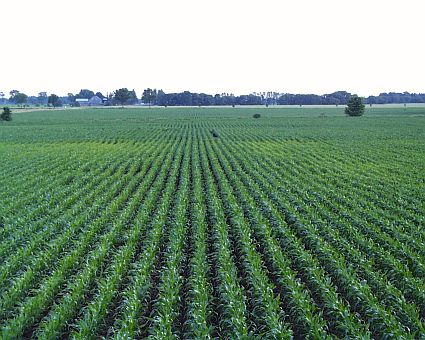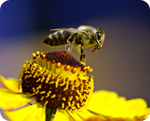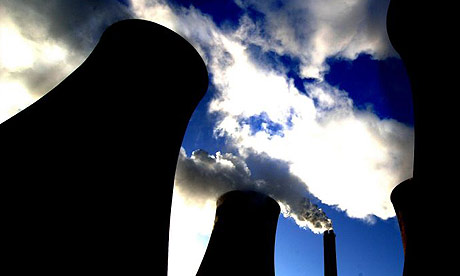Special thanks to the Rothschild family and all the other elite criminals, who keep all those advanced, free technologies, that could turn planet earth back into paradise, from humanity.
David de Rothschild set out on a mammoth ocean crossing aboard his recycled yacht to highlight pollution of Earth’s waters – but even he was shocked by what he found
 The weather closes in on the Plastiki, above. The recycled plastic bottle boat is due to complete its 7,000-mile voyage in Sydney in two weeks’ time.
The weather closes in on the Plastiki, above. The recycled plastic bottle boat is due to complete its 7,000-mile voyage in Sydney in two weeks’ time.
“After 100 days at sea,” David de Rothschild suggests, “you realise that it should be called planet Ocean rather than planet Earth.” De Rothschild is speaking from the island of New Caledonia – “an odd little bit of France in the South Seas” – the night before his boat, the Plastiki, embarks on the final leg of a voyage that should finish in Sydney harbour in a fortnight.
The Plastiki, a revolutionary catamaran, is kept afloat by 12,500 plastic bottles in its hulls; the “eco-adventure” has been designed to draw attention to our systematic pollution and over-fishing of oceans. In the three and a half months since De Rothschild, the refusenik 31-year-old son of the banking dynasty, and his crew of five set out from San Francisco they have discovered many things, but mainly, he says, they have learned about the sea, about its power and about its fragility.
The power was amply demonstrated on the leg of the journey just completed, the 1,700 miles from Samoa, during which the vessel’s unconventional construction was rigorously tested by 13ft swells and 35-knot winds for days on end. It is hard not to be reminded of your insignificance in the universe, De Rothschild says, when hanging off the side of a yacht made partly of plastic bottles, 1,000 miles from land in the pitch dark, while the Pacific breaks over you.
The ocean’s fragility they witnessed in the place where much of the world’s discarded plastic ends up, the “eastern garbage patch”. This, the focus of their voyage, is a floating “continent” of debris. Nothing that the crew had read in advance could prepare them for what they found navigating an area twice as large as the North Sea. “You don’t see it at first,” De Rothschild says. “But when you get into the sea, and under the water, you realise that it is all like a soup, millions and millions of tiny fragments of plastic, suspended in the water. It is mostly microscopic, but once your eye adjusts you start to see the reflectiveness of some of the larger pieces. The red fragments stand out most clearly.”
The garbage patch was first identified 12 years ago within the “North Pacific gyre” – a vortex where the ocean circulates slowly because of light wind and extreme high pressure systems. Oceanographers have since suggested that perhaps 100 million tonnes of plastic are held in suspension in these waters. One of the things that the Plastiki voyage has demonstrated is just how durable modern polymers are: the pressurised bottles of its hull have hardly been knocked out of shape, let alone broken up by the 8,000-mile voyage. “That’s why just about every plastic bottle that has been made still exists,” De Rothschild says.
The garbage patch was first identified 12 years ago within the “North Pacific gyre” – a vortex where the ocean circulates slowly because of light wind and extreme high pressure systems. Oceanographers have since suggested that perhaps 100 million tonnes of plastic are held in suspension in these waters. One of the things that the Plastiki voyage has demonstrated is just how durable modern polymers are: the pressurised bottles of its hull have hardly been knocked out of shape, let alone broken up by the 8,000-mile voyage. “That’s why just about every plastic bottle that has been made still exists,” De Rothschild says.
The voyage has been overshadowed by the more graphic pollution of the BP oil spill, but even that is dwarfed by the scale of the problem the Plastiki highlights. While the deaths of seabirds and marine life in the Gulf of Mexico are still being measured in the hundreds, according to the UN Environment Programme, plastic debris causes the deaths of more than a million seabirds every year, and more than 100,000 marine mammals. Back in 2006, the UN concluded that every square mile of ocean contains 46,000 pieces of floating plastic. Since then the problem has only grown.
“One of the difficulties in conveying it to people,” De Rothschild says, “is that you can’t photograph it, the flecks are too small. What perhaps makes it most relevant and real for individuals is the health aspect of it. These particles are ingested by marine life and pass into our food chain. We all do it: we throw this stuff, this packaging, what I call dumb plastic, into the bin, and we think it has gone. But it comes back to us one way or another. Some of it ends up on our dinner plates.”
The voyage was inspired by Thor Heyerdahl’s Pacific journey on the Kon-Tiki in 1947. Olav Heyerdahl, the Norwegian explorer’s grandson, has been aboard for part of the Plastiki adventure. The comparison between the two voyages illustrates other aspects of the ocean’s fragility, De Rothschild believes.
“When you watch the film of Kon-Tiki and read Heyerdahl’s account, you are struck by how alive the ocean seemed then,” he says. “They were literally having to throw fish off the raft.” That has not been the Plastiki experience at all. “For us it has been much more, where is everybody? We have seen a couple of dolphins, a couple of distant whales, a few flying fish, [but] other than that, nothing.” Heyerdahl could survive on fish, but on board the Plastiki they have caught only a couple of tuna in three months, despite having their lines in the water every day. “When you start reading about 80% of the world’s fish stocks being gone, it’s hard to believe,” De Rothschild says. “But then you come out here.”
Even in the middle of the world’s largest ocean it is hard to avoid some of the habits that have created the problem. At Christmas Island, where much of the food arrives in American packaging, “popsicle bags are a scourge”. On Samoa, villages compete over recycling plans, but as soon as villagers were out of their backyard De Rothschild watched young and old throwing plastic bottles into the sea.
One of the more gratifying aspects of the voyage has been the way that the message seems to have been communicated. Plastiki has a vivid ship-to-shore blog – “talking about the ocean from the ocean” – and there has been excitement wherever they have docked. In New Caledonia, De Rothschild says, perhaps three quarters of the people who have seen the boat in the harbour said they had read about it and supported the project. That didn’t stop him witnessing one “supporter” subsequently chucking bags full of rubbish over the side of his boat. “None of us likes the idea of fouling our own nest,” he says. “But we are not good at thinking of the whole world as our nest.”
The Plastiki team do not do pessimism, though sometimes De Rothschild admits he feels like he is banging his head against a brick wall. Their own on board efforts at self-sufficiency have gone well, composting waste, powering batteries with a mixture of solar panels and bicycle-powered turbines. Even so, he is confronted by the fact that, however good your intentions, it is hard to live a life without plastic. When we speak, De Rothschild has just done the shopping for the Sydney leg of the voyage. In the supermarket all the vegetables and all the salad were wrapped in plastic. “It’s like a disease,” he says. “But we have to believe the argument can be won. Getting rid of dumb plastic, bags in particular, could be a very simple piece of legislation; making supermarkets use reusables is not so hard.”
The crew’s website is full of stories of people “doing their own Plastiki”, pledging to eliminate plastic bottles from their school or workplace, or creating a zero waste policy. De Rothschild hopes the voyage can be a metaphor for this. “We are just a bunch of citizens, we are not scientists or marine biologists, but we want to show that if we work together we can do something.”
That sense of teamwork has no doubt been tested on board the catamaran. I saw the Plastiki in San Francisco before it set off, and was struck by how limited the space was – a tiny geodesic dome of cabin – not least for the 6ft 4in de Rothschild: how have they coped?
“Usually you are so exhausted by the end of the day that you could sleep anywhere,” he says. “It’s a really odd contrast, you are on this tiny platform and yet you have this enormous space around you. It becomes a little dance, in a way: you are fantastically aware of the other people, how they move. But we have a rule that if you say ‘fuck, you are annoying me’, which we all do, then it has to be done in a spirit of jest.”
Sydney is not so far away, but there are some rough seas and weather forecast, so he is trying not to look too far ahead. “It will be a chapter over,” he says. “But we are only just beginning to get this message across. The boat will go around the world, I hope, as a symbol of that. I feel, in every sense, that we are in the calm before the storm.”
Tim Adams Sunday
11 July 2010
Source: The Observer
















